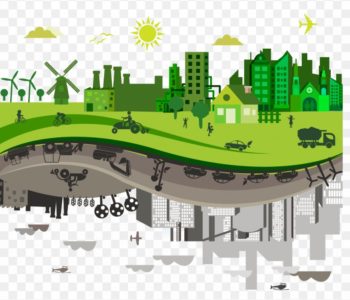
Ammonia Pollution
R
eleased data from the European Environment Agency shows how the emissions of most air pollutants are decreasing in the European Union, in contrast to the increasing ammonia (NH3) emissions from the agricultural section, which challenges the EU Member states to meet their air pollution limits.1
Ammonia is one of the most produced inorganic chemicals in the world, with an estimated annual global production of up to 200 million tons.2 Approximately 80% of the global ammonia production is used in the fertiliser industry,2 playing a key role in sustaining the exponential growth in human population in the last 50 years, as seen in Figure 1.3

Figure 1 – Portion of the global population supported by synthetic NH3 (in red), from 1900 to 2015.4
Despite our dependency on ammonia fertiliser, NH3 is a highly toxic chemical and undesirable NH3 emissions into the natural environment are responsible for damaging the biodiversity in aquatic and terrestrial ecosystems, as well as the human health. Exposure to high levels of gaseous NH3 has been associated to adverse health conditions in humans skin, lungs and eyes, and concentrations of about 3000 ppm can be fatal in roughly 30 minutes.5 Gaseous ammonia is colourless and it can combine with other contaminants present in the atmosphere, such as sulfuric dioxide, volatile organic compounds and nitrogen oxides, to form harmful small sized particulate matter, known as PM2.5.6 These PM2.5 can travel long distances (up to 1000 km).7 NH3-derived PM2.5 is responsible for causing adverse health conditions, as cardiovascular disease, asthma, lung cancer and premature death.7
In the past years, the increase in NH3 levels has been widely attributed to farming intensification. In this sector only, NH3 emissions increased by 90% between 1970 and 2005.8 It is estimated that more than 60% of the applied nitrogen-based fertiliser is not used by crops to grow.9 Nutrient loss is a major source of pollution and it is, in different extent, globally widespread. Another major source of ammonia emissions is produced by livestock manure.
In Europe, sixteen out of twenty-eight members had surpassed in 2016 their 2020 ammonia emission limits.10 Among which the most NH3-pollutant countries were in Latvia, Germany and United Kingdom.10
In UK, Northern Ireland (NI) alone is responsible for 12% of the total NH3 emission.11 The majority (94%) of these emissions originates from the agriculture sector, and in particular from cattle, which accounts for the largest portion (69%).12 Most of NI including priority habitats have a nitrogen concentration that causes significant and irreparable ecological damage. Northern Ireland Environment Link (NIEL) reported in 2019 that 90% of NI’s protected habitats, 98% of Special Areas of Conservation and 83% of special protected areas have exceeded critical loads of nitrogen deposition. Moreover, data released by Department of Agriculture, Environment and Rural Affairs (DAERA) shows significantly deteriorating water quality standards, with 95% of lakes not meeting the Water Framework Directive quality standards and nitrogen levels in both river and marine bodies rising in the past years.13
Some of the strategies that have shown to reduce emissions include: reducing food waste, changing crop allocation to maximise the gain in crop yield, investing in agriculture technology, supporting agricultural modernization, and using chemical nitrogen fertilisers effectively and efficiently.9, 10, 12 Ammonia pollution can be as well reduced by improving confined animal buildings and livestock raising techniques, with better design to sequestrate NH3, reducing the hazard for workers and the NH3 emissions to the atmosphere.11 Moreover, a careful slurry management, including artificial floating crust or a fixed cover, can also reduce ammonia emission up to 60%, during the storage.12
Ammonia emissions are a threat for humans and the natural ecosystems. There is an urgent need to reduce the impact of the agriculture sector, which represents the major source of NH3 emission in the natural environment. Further actions need to be implemented to prevent further biodiversity loss, prevent public health, and at the same time enable sustainable development.
References
1. Air quality in Europe – 2020 report; European Environment Agency: 2020.
2. Garagounis, I.; Vourros, A.; Stoukides, D.; Dasopoulos, D.; Stoukides, M., Electrochemical Synthesis of Ammonia: Recent Efforts and Future Outlook. Membranes (Basel) 2019, 9 (9), 112.
3. Smil, V., Detonator of the population explosion. Nature 1999, 400 (6743), 415-415.
4. Erisman, J. W.; Sutton, M. A.; Galloway, J.; Klimont, Z.; Winiwarter, W., How a century of ammonia synthesis changed the world. Nature Geoscience 2008, 1, 636.
5. Birken, G. A.; Fabri, P. J.; Carey, L. C., Acute ammonia intoxication complicating multiple trauma. J Trauma 1981, 21 (9), 820-2.
6. Gu, B.; Sutton, M. A.; Chang, S. X.; Ge, Y.; Chang, J., Agricultural ammonia emissions contribute to China’s urban air pollution. Frontiers in Ecology and the Environment 2014, 12 (5), 265-266.
7. Asman, W.; Sutton, M. A.; Schjørring, J. K., Ammonia: emission, atmospheric transport and deposition. New Phytologist 1998, 139, 27-48.
8. Sommer, S. G.; Webb, J.; Hutchings, N. D., New Emission Factors for Calculation of Ammonia Volatilization From European Livestock Manure Management Systems. Frontiers in Sustainable Food Systems 2019, 3 (101).
9. West, P. C.; Gerber, J. S.; Engstrom, P. M.; Mueller, N. D.; Brauman, K. A.; Carlson, K. M.; Cassidy, E. S.; Johnston, M.; MacDonald, G. K.; Ray, D. K.; Siebert, S., Leverage points for improving global food security and the environment. Science 2014, 345 (6194), 325-328.
10. Giannakis, E.; Kushta, J.; Bruggeman, A.; Lelieveld, J., Costs and benefits of agricultural ammonia emission abatement options for compliance with European air quality regulations. Environmental Sciences Europe 2019, 31 (1), 93.
11. Luke, J.; Lucy, G.; Courtney, S.; King, K. Air Pollution Inventories for England, Scotland, Wales, and Northern Ireland: 2005-2019; Department for environment Food and Rural Affairs: 2021.
12. Code of Good Agricultural Practice for the Reduction of Ammonia Emissions; Department of Agriculture, Environment and Rural Affairs: 2019.
13. Ciara, B.; Laura, N.; James, O.; Ekaterina, G. EJNI Briefing Paper Series Northern Ireland Assembly – Ammonia Pollution in Northern Ireland; Environmental Justice Network Ireland (EJNI): 2020.









